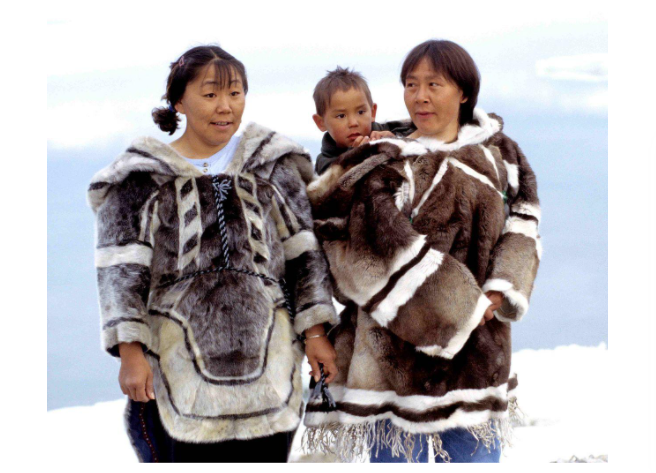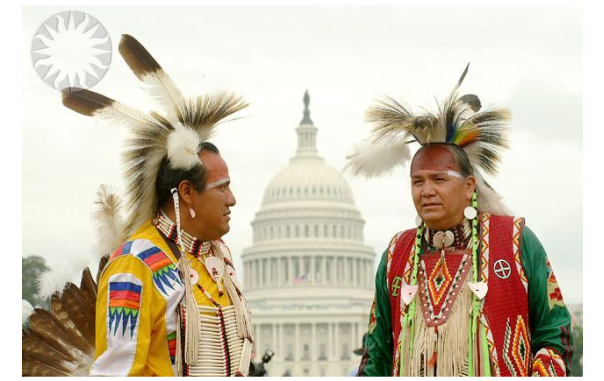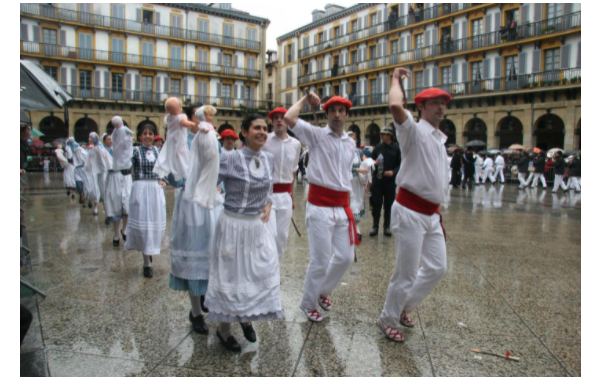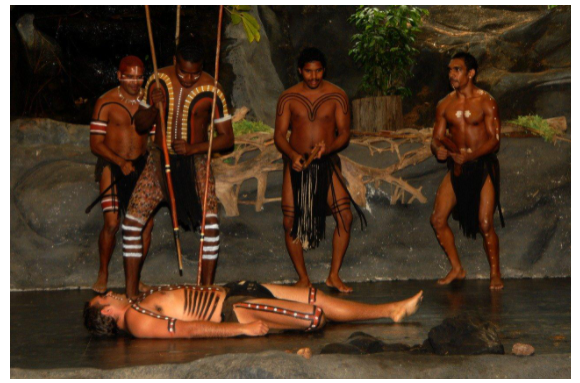Tribals across the world often face discrimination and violence, and their access to education and other basic services is limited. Here, we will discuss income level, education, housing, living conditions, health, food security level, social status, and criminal justice system of indigenous people across the world.
Tribals of Canada

The major tribes of Canada are Cree, Dene, Inuit, and Métis. According to the 2011 National Household Survey, there are 1,172,790 Aboriginal people in Canada, accounting for 4.3% of the population. Of these, 977,230 (83%) are registered Indians belonging to 633 First Nations. Most of them are concentrated in areas like the Northwest Territories, Yukon, and Nunavut.
Income Level
The median income of aboriginal households ($72,605) was slightly higher than that of non-aboriginal households ($67,085). Almost one-quarter (23%) of aboriginal people aged 25 to 64 had a university degree or higher, compared to 19% of the non-aboriginal population.
Education
Inuit have the highest level of education in Canada. In Nunavut, almost 60% of Inuit aged 25 to 64 have a post-secondary certificate, diploma or degree, compared to 26% of all Canadians. College students make up the majority of Inuit students, and the number of Inuit post-secondary students is growing. TutorHelp.Club experts have assisted many of these students to get good grades in their academic pursuits.
Housing
The median housing value for aboriginal households ($292,600) was more than double that of non-aboriginal households ($126,200). Over one-third, (37%) of aboriginal people lived in crowded conditions, compared to 14% of the non-aboriginal population.
Living Conditions
Inuit living in Nunavut had the best living conditions, while aboriginal people living on the reserve had the worst. Inuit living in Nunavut were more likely to have a household income of $100,000 or more (47%) than those living off-reserve (29%) or in the rest of Canada (10%). They were also more likely to have a post-secondary education (60%) than aboriginal people living on reserve (26%) or in the rest of Canada (18%).
Health
Aboriginal people were much more likely to report poor health than the non-aboriginal population. Inuit living in Nunavut were the healthiest, while aboriginal people living on reserve were the least healthy. Nearly half (47%) of all aboriginal people reported having been diagnosed with at least one chronic condition, compared to 28% of the non-aboriginal population. Aboriginal people were also more likely to smoke (37%) and drink alcohol (59%) than the non-aboriginal population.
Food Security Level
Aboriginal people were more likely to experience food insecurity than the non-aboriginal population. Inuit living in Nunavut had the lowest rate of food insecurity (8%), while aboriginal people living on the reserve had the highest rate (43%).
Social Status
Aboriginal people were more likely to be living in poverty than the non-aboriginal population. The median income of aboriginal households ($72,605) was slightly higher than that of non-aboriginal households ($67,085), but this difference was largely due to the high-income levels of Inuit and Métis households. Over one-quarter (27%) of aboriginal people were living in poverty, compared to 14% of the non-aboriginal population.
Criminal Justice System
Aboriginal people were more likely to be incarcerated than the non-aboriginal population. Aboriginal people accounted for 23% of all admissions to federal and provincial/territorial custody, although they made up only 4% of the population. Aboriginal women were particularly overrepresented in custody, making up 36% of all admissions even though they make up only 4% of the population.
Tribals of the US

In America, most of the tribal people are from the Native American group. According to the 2010 census, there are about 5 million people who identify themselves as tribal members, which is around 2% of the population. The Cherokee, Navajo, and Sioux are some of the largest tribes in America. Most of them live in areas like the Great Plains, Southwest, and Southeast.
Income Level
A recent study by the US Census Bureau found that, on average, tribal members have a lower income and are more likely to be living in poverty than the rest of the population. Almost one-third of all tribal members live below the poverty line. This is largely due to the high unemployment rate among tribal members; as of 2013, the unemployment rate was almost twice as high as the national average.
Education
Despite the challenges they face, many tribal members are succeeding in school. A recent report by the National Indian Education Association found that, overall, American Indian and Alaska Native students are outperforming their peers from other racial and ethnic groups. However, there is still a lot of work to be done; in particular, tribal students need better access to high-quality education programs. TutorHelp.Club provides specialized academic assistance services to these students.
Housing
Many tribal members in the US live in poor conditions, often lacking basic amenities like running water and electricity. In some cases, they are forced to live on reservations that are plagued by poverty, crime, and unemployment. Native Americans are the ethnic group most likely to lack access to improved drinking water. Despite all of these challenges, however, many tribal people are working hard to improve their lives. They are fighting for their rights, and they are making a difference in their communities.
Living Conditions
Tribals in the US have many disadvantages in living conditions. They are more likely to live in poverty, lack education, employment, and running water. Most tribal people live on reservations that are often in poor condition. The Navajo, Cherokee, and Sioux are some of the largest tribes in America. Children living on these reservations often lack access to proper education and health services.
Health
Native Americans have the poorest health of any racial or ethnic group in America. They are more likely to die from diseases like cancer and diabetes, and they are also more likely to be victims of violence. In addition, many tribal members do not have access to quality healthcare services.
Food Security Level
One in four Native American households is food insecure, meaning they don’t have enough money to buy the food they need. This is largely because many tribal members live on reservations where there is little or no access to healthy food. In some cases, the only food available is junk food.
Social Status
Tribal people have a lower social status than the general population. They are more likely to be unemployed, live in poverty, and lack healthcare and education. But these differences are getting bridged over time. As more and more tribal people are entering mainstream society, their social status is gradually improving.
Criminal Justice System
American tribal members are often targeted by the criminal justice system. They are more likely to be arrested, convicted, and incarcerated than the general population. This is in part because many tribal members lack access to quality legal representation. Native Americans have the same rights as other citizens, but they often do not receive the same opportunities.
Tribals of Europe

Major tribes in Europe are the Irish, Scottish, Welsh, Basque, and Bretons. These tribes have a long history of fighting for their independence. Today, they are working to preserve their unique cultures and traditions. Many of them are struggling with poverty and unemployment, but they are determined to succeed.
The plight of tribals in Europe is different from that of the US. Many tribal people in Europe are struggling to maintain their traditional way of life. At the same time, they are facing increasing pressure from the government and from mainstream society to assimilate. This is a difficult balance to strike, and many tribal people are finding it hard to keep their cultures alive.
Income Level
Tribal people in Europe tend to have lower incomes than the general population. They are often unemployed or underemployed, and they lack access to quality education and healthcare. In some cases, they are even forced to leave their traditional homes and move to urban areas.
Education
European tribes are working hard to improve the education of their children. Many tribal schools are now offering quality instruction in their native languages. In addition, tribal people are increasingly attending universities and colleges. This is a sign of hope for the future of tribal cultures in Europe. TutorHelp.Club offers online tutoring services in different languages and helps preserve the cultures with the help of technologies.
Housing
European tribes in different regions face different housing challenges. Some tribal people are living in poverty, while others are struggling to find affordable housing. In some cases, tribal members are forced to live in substandard conditions. But there are also success stories, with tribes building their own homes and achieving self-sufficiency.
Living Conditions
In Europe, tribals often live in difficult conditions. They lack access to quality healthcare, education, and housing. They are also more likely to be unemployed or underemployed. This leaves them vulnerable to poverty and social exclusion.
Health
The primary healthcare system for tribal people in Europe is often inadequate. Many tribal members lack access to quality healthcare services, and they are more likely to die from treatable diseases like cancer and heart disease. This is in part because many tribal people live in remote areas with no access to medical care. Violence and substance abuse are also major problems in tribal communities.
Food Security Level
Obesity and diabetes are major health problems in tribal people of Europe because they lack access to healthy food, and in some cases, eat junk food too often. Many tribal people are struggling to adapt to changing dietary patterns. This is a major challenge for public health officials in Europe.
Social Status
Socially, tribals in Europe are at a disadvantage. They do not have the same access to education and employment opportunities as the general population. In some cases, they are discriminated against because of their race or ethnicity. This makes it difficult for them to achieve equality.
Criminal Justice System
European laws and the judiciary system often do not take into account the specific needs of tribal people. This can lead to unfair treatment and a lack of justice for tribal communities. Tribal people also face challenges when interacting with the criminal justice system. They may not understand the legal process, and they may not have access to legal representation.
Indigenous People of Australia

Australian tribes are in a much better situation than their counterparts in Europe. The Australian government has recognized the rights of indigenous people, and it has made efforts to improve the social and economic conditions of tribal communities. Major tribes in this part of the world are the Aboriginals and the Torres Strait Islanders. Their highest concentration is in the Northern Territory.
Income Level
Australian tribes have much higher incomes than their European counterparts. This is because they have access to quality education and employment opportunities. In addition, many Australian tribes operate their own businesses, which generate income for tribal members.
Education
Australian tribes are doing a good job of educating their children. Most tribal schools offer quality instruction in the indigenous languages of Australia. In addition, many tribal people are attending universities and colleges. This is a sign of hope for the future of Australian tribal cultures. TutorHelp.Club offers specialised services for indigenous students.
Housing
Australian tribes face different housing challenges than their European counterparts. They live in a wide variety of settings, from rural areas to urban neighbourhoods. Today, many tribal people are living in dilapidated housing conditions. This is a major problem that needs to be addressed.
Living Conditions
Australian tribal people are relatively well off when it comes to living conditions. They have access to quality healthcare, education, and housing. But they still face challenges, such as violence and substance abuse. In addition, they are more likely to be unemployed or underemployed. This is why more needs to be done to improve the social and economic conditions of Australian tribes.
Health
Australian government offers specialised health services for indigenous people. These services are funded by the government, and they are available to tribal members free of charge. This is a major advantage for Australian tribes. They are able to access quality health care without having to pay for it.
Food Security Level
Australian tribes have access to a variety of healthy foods. This is because they live in rural and urban areas. They are also able to grow their own food, which helps to improve their food security level.
Social Status
The social acceptance of indigenous people in Australia is high. This is because the Australian government has recognised their rights and has made efforts to improve their social and economic conditions. In addition, many Australians are sympathetic to the plight of indigenous people.
Criminal Justice System
Australian laws and legal systems are designed to meet the specific needs of indigenous people. This is a major advantage for Australian tribes. They are able to access justice without having to face discrimination or unfair treatment.
As the world progresses, different cultures are mixing and melding together to form one global community. While this offers opportunities for growth and enrichment, it also presents challenges.
While the conditions of tribal people around the world vary, there are common themes that unite them. They all face challenges in terms of education, healthcare, and social status. But they also have many strengths and resilience that help them overcome these challenges. Tribals are an important part of the human race, and it is important to remember their stories and the contributions they have made to society.



0 responses on "The Plight of Tribals across the World and How They are Doing Academically"